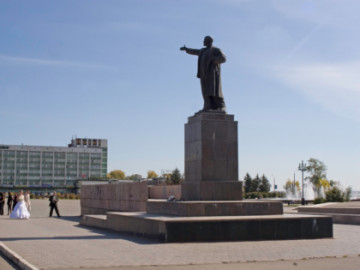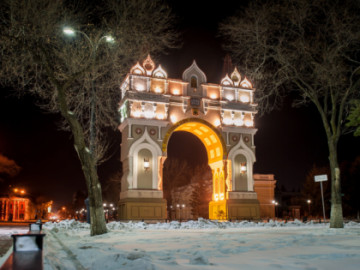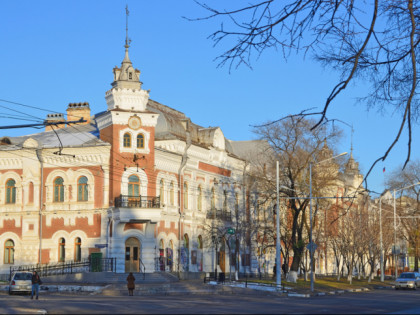Amur Regional Local Lore Museum- the oldest museum in the Far East
The appearance of the Amur Regional Local Lore Museum was connected with the future Emperor Nicholas II who came to Blagoveshchensk in 1891 for a couple of days. A pavilion dedicated to the gold mines was especially built for his arrival. After the departure of the heir to the throne the exhibits were handed over to the city. They became the basis of the museum of local lore in 1898.
In 1981 the Local Lore Museum moved to a two-story building of the end of the 19th century, the former department store of the German company Kunst & Albers. There is a striking clock on the facade of the house which plays waltz twice a day. The meteorite and the bones of fossil animals, found at the beginning of the 20th century, are of a particular interest among the exhibits. The stuffed Amur tiger, Asiatic black bear, as well as elk, deer and Far Eastern red deer, which were involved in the Red Data Book of the Russian Federation (RDBRF), are exhibited in the halls dedicated to the nature of the Amur region. In the archeological hall one can see a female figure carved from the bone 25-18 thousand years ago, and get acquainted with the peculiarities of the life of the indigenous peoples of this region: the Mohe, the Daurs, the Evenks and the Nivkhs. The highlight of the ethnographic collection is a shaman costume with a headdress made of deer horns of the beginning of the 20th century. The model of the Albazin prison of the XVII century - the first settlement in the Amur region, resembles of the development of the region by the Russians. Part of the exposition tells about the life of the first settlers - Cossacks. Here there is also the reconstruction of a city apartment of the early XX century and there is a section devoted to the emigration to China after the 1917 revolution.


































